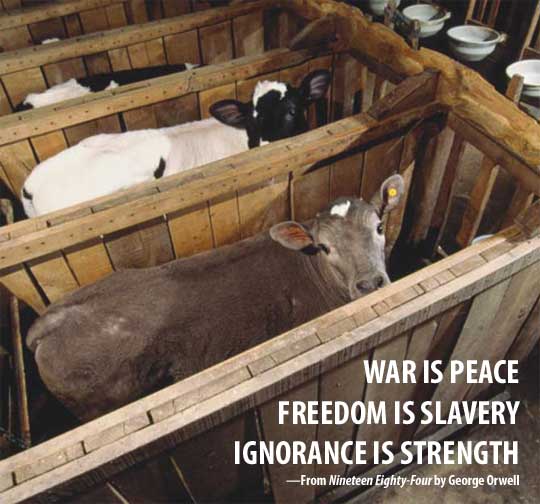I found the inclusion of Alice in Wonderland in Derrida’s analysis on speciesism to be fascinating. The excerpts in the anthology were confusing to say the least. Derrida argues that it is impossible to presuppose certain relationships with animals “for I no longer know who I am (following) or who it is I am chasing, who is following me or hunting me” (598). Derrida approaches a reconfiguration with animals through a problematization of the Self. I think that Derrida is correct in focusing on a deeper interrogation. Contrary to the belief that Cartesian dualism is the cause of the exploitation of animals, Derrida believes that we need to look at something more intrinsic to the development of humans. Many argue that “Descartes internalized, within man, the dualism implicit in the human relation to animals. In dividing absolutely body from soul, he bequeathed the body to the laws of physics and mechanics, and, since animals were soulless, the animal was reduced to the model of a machine” (605). Derrida seeks to look past this arbitrary rise of speciesism and acknowledge that speciesism was likely borne out of pre-Enlightenment practices. Most confusing from the Derrida passage is his use of the famed Alice quotation regarding madness, “We’re all mad here. I’m mad. You’re mad” (598). Out of context, it is pretty confusing to see how this is remotely relevant to Derrida’s argument. However, further reading of The Animal That Therefore I Am contextualizes this more. Derrida is attempting to undermine previous relations with animals in order to develop a new relationship with the Other. Derrida speaks from the “point of view of the absolute other, and nothing will have ever done more to make me think through this absolute alterity of the neighbor” (Derrida). After declaring one’s own madness, “I no longer know how to respond, or even to respond to the question that compels me or asks me who I am (following) or after whom I am (following), but am so as I am running” (Derrida). In doing so, Derrida is developing a new mode of Being with animals. Specifically, that is “Being after, being alongside, being near [pres] would appear as different modes of being, indeed of being-with. With the animal” (Derrida). While I admit, the Madness claims are still relatively abstract in this context, Derrida makes a little more sense. The declaration of one’s own Madness functions to dissolve the boundaries between animals and humans in order to develop a different mode of being-with animals. It is only through reconfiguring these relationships (as opposed to mere rhetoric) can hierarchies be challenged.
 |
| derrida |
Wendy Brown. Politics Out Of History. Princeton University Press (2001): 30.
Jacques Derrida. The Animal That Therefore I Am. Fordham University Press (2008).
Michel Foucault. “The Subject and Power”. Power: Essential Works of Foucault Vol. 2. Ed. Colin Gordon.
















